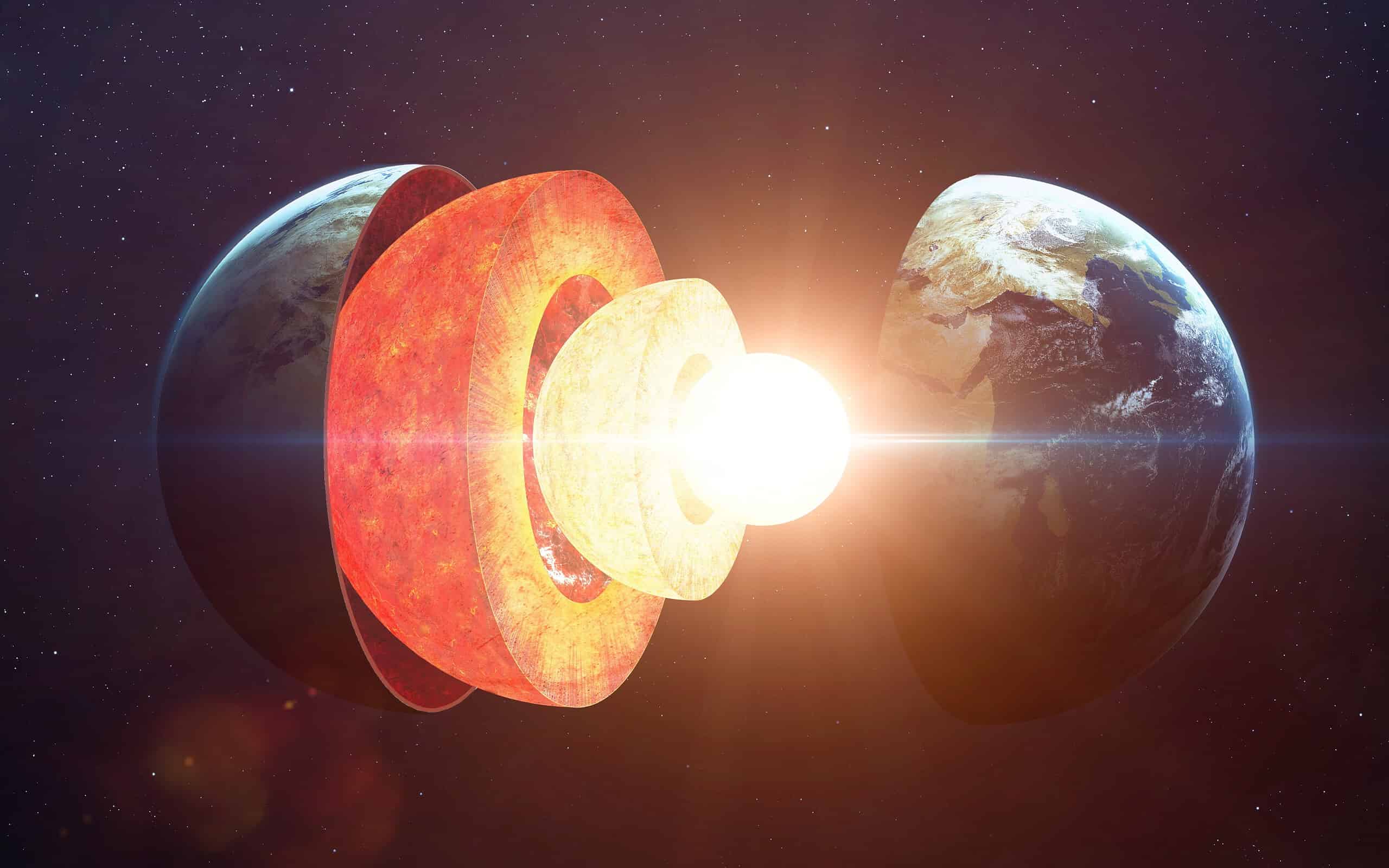
Planet Earth consists of a crust, a mantle, and a core — so then what’s the asthenosphere? Wait, there’s something called a lithosphere too? What gives?!
The asthenosphere is a hot, semi-fluid layer inside the Earth’s mantle. It lies beneath the rigid lithosphere, extending from approximately 100 to 700 kilometers (62 to 435 miles) below the Earth’s surface. Unlike the lithosphere above it, the asthenosphere is ductile and “plastic” meaning it can flow over geological timescales.
What is the Asthenosphere?

Walking around the surface of the Earth, you might think that everything on the planet is solid — and for the most part, you’re right. But go a little deeper—tens of kilometers below your feet—and things start to get a little… wobbly. That’s where the asthenosphere comes into play.
The asthenosphere is a layer of the Earth located beneath the solid outermost shell called the lithosphere. Think of it as a thick, flowing layer of partially melted rock that behaves like a very slow-moving fluid over geological time.
So why do we sometimes refer to a crust and a mantle, and other times to a lithosphere and an asthenosphere? Well, the crust and the mantle are separated by chemistry. They’re made up of different minerals and chemical elements. But the crust and the top part of the mantle behave similarly — they’re both rigid. So if you want to classify them by how they behave, you go with lithosphere-asthenosphere.
This can be a bit confusing, so here’s the simplest way to think about it. The lithosphere includes the crust and the top part of the mantle; the asthenosphere contains the rest of the mantle.
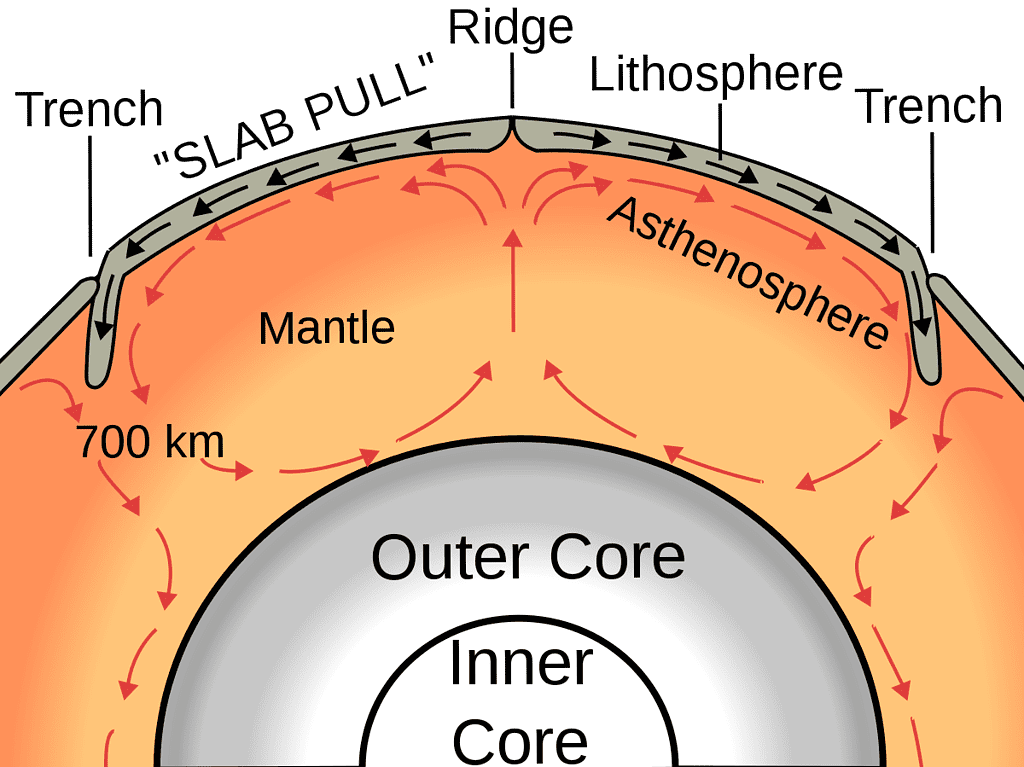
Asthenosphere and Lithosphere: Earth’s dynamic duo
The interplay between the lithosphere and asthenosphere produces pretty much all the geological forms we see on the surface.
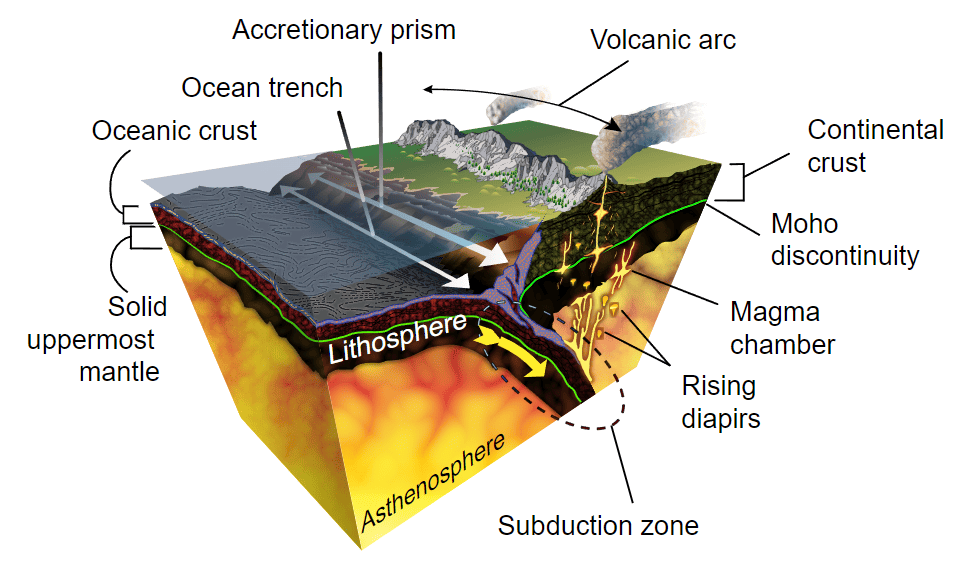
You’ve likely heard of tectonic plates. These are massive pieces of Earth’s crust that float atop the semi-fluid asthenosphere. Imagine an iceberg floating on water. The iceberg is your lithosphere, while the ocean beneath it represents the asthenosphere.
That’s a simplistic view, but the gist of it is that the rigid lithosphere “floats” on the plastic asthenosphere. The lithosphere makes up the tectonic plates, while the asthenosphere hosts the mechanism that moves these plates around.
The movement of these tectonic plates, caused by the flow and convection of the asthenosphere, is responsible for shaping our planet’s geography. From the formation of mountains to the birth of new ocean floors, the asthenosphere provides the necessary push and pull.
In a nutshell, the asthenosphere is like Earth’s “lubricant layer,” facilitating the motion of tectonic plates and playing a crucial role in the dynamic processes that shape our planet.
“Tectonic plates float on top of the asthenosphere, and the leading theory for the past 40 years is that the lithosphere moves independently of the asthenosphere, and the asthenosphere only moves because the plates are dragging it along,” said graduate student Alana Semple at Rice University, lead co-author of a study that analyzed how flow in the asthenosphere drags tectonic plates around.
“Detailed observations of the asthenosphere from a Lamont research group returned a more nuanced picture and suggested, among other things, that the asthenosphere has a constant speed at its center but is changing speeds at its top and base, and that it sometimes appears to flow in a different direction than the lithosphere.”
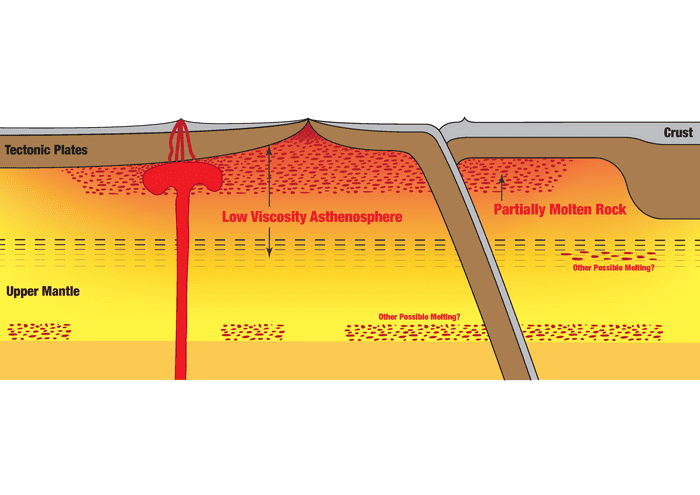
What’s the Asthenosphere made of?
When you delve into the world of the asthenosphere, you’re essentially diving into a soup of molten minerals. Primarily composed of silicate rocks, this viscous layer has temperatures that soar above 1,300°C (2,372°F). But, interestingly, it’s not entirely liquid. It remains mostly solid, yet it’s able to flow thanks to the small percentage of molten material within it.
The asthenosphere is primarily composed of a type of rock called peridotite, which is rich in iron and magnesium. Peridotite is a dense, coarse-grained igneous rock that forms the bulk of the Earth’s mantle.
The composition of the asthenosphere is similar to the surrounding mantle, but what distinguishes it is its mechanical properties. Due to high temperatures and pressures at the depths where the asthenosphere resides (about 100 km to 700 km beneath the Earth’s surface), the peridotite becomes partially molten or “ductile.”
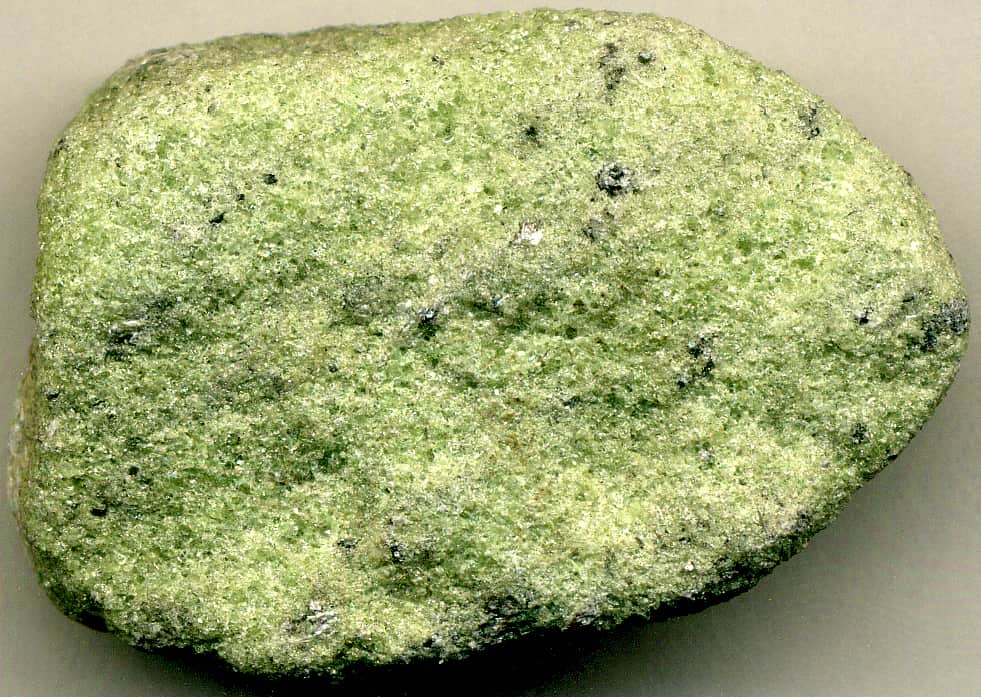
It’s important to keep in mind that the peridotite (and other minerals) in the asthenosphere don’t look like they would on the surface.
Although it’s not a liquid, this layer is plastic enough to deform and flow, which allows the more rigid lithospheric plates above it to move around.
So, when we talk about what the asthenosphere is made of, it’s not just the type of rock that’s important but also the particular physical conditions—like temperature and pressure—that give this layer its special properties.
Asthenosphere Facts: Unraveling Earth’s Secrets
Let’s get to the heart of what makes the asthenosphere so fascinating:
- Depth: The asthenosphere starts roughly 100 km below the Earth’s surface and extends to about 700 km beneath us.
- A Hidden Ocean? It might sound strange, but there’s a hypothesis suggesting that a significant amount of water is stored in the asthenosphere. Not in liquid form, mind you, but within the structure of its minerals.
- Hot and Movable: The heat in the asthenosphere comes from the decay of radioactive elements and the Earth’s core. This heat causes the asthenosphere to convect, influencing the movement of the lithosphere above.
- State: Though solid, the asthenosphere is ductile and semi-fluid, allowing it to flow slowly over geological timescales.
- Pressure: The pressure in the asthenosphere can be up to 24 gigapascals, which is approximately 240,000 times atmospheric pressure at sea level.
- Seismic Activity: Earthquakes generally do not originate in the asthenosphere; they are more common in the lithosphere above it.
- Convection Currents: The asthenosphere is home to convection currents, where hot material rises, and cooler material sinks, driving plate motion.
- Discovered Through Seismology: The properties of the asthenosphere have been inferred through seismological studies, which analyze how seismic waves travel through Earth’s interior.
- Viscosity: The material in the asthenosphere is far more viscous than liquid but less rigid than solid lithospheric rock, allowing it to flow.
- Global Distribution: The asthenosphere is present beneath all of Earth’s tectonic plates, whether oceanic or continental.
- Volcanic Hotspots: Some volcanic hotspots are thought to be fueled by “mantle plumes” that rise from even deeper parts of the mantle and pass through the asthenosphere. Hawaii is a famous example.

How geologists study the asthenosphere
Studying the asthenosphere is not easy. In fact, it presents a unique set of challenges because it is located deep within the Earth, making it inaccessible for direct observation. After all, the deepest hole we’ve dug is only around 12 km deep.
However, scientists have developed various indirect methods to investigate its properties, composition, and behavior. Here’s how we study the asthenosphere:
Seismology
- Seismic Waves: One of the most common ways to study the asthenosphere is by examining how seismic waves travel through it. The speed and behavior of these waves can reveal a lot about the materials they pass through.
- Earthquakes: Seismic events like earthquakes produce waves that travel through the Earth’s interior. By monitoring how these waves propagate, scientists can infer details about the asthenosphere’s properties.
- Seismic Tomography: This technique is similar to a CT scan of the Earth. It uses data from multiple seismic events to create a three-dimensional image of the asthenosphere and other layers.
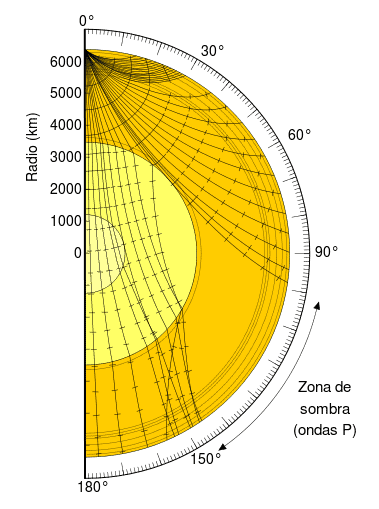
Mineralogy and Petrology
- Rock Samples: While we can’t obtain samples directly from the asthenosphere, rocks from the mantle occasionally make their way to the surface through volcanic eruptions or tectonic processes. These rocks can provide clues about the asthenosphere’s composition.
- Laboratory Experiments: Researchers conduct high-pressure, high-temperature experiments to simulate conditions in the asthenosphere, helping to understand its mineralogical properties.
Geophysical Methods
- Magnetic and Gravitational Studies: Variations in Earth’s magnetic and gravitational fields can offer insights into the distribution of materials within the Earth, including the asthenosphere.
- Heat Flow Measurements: Analyzing heat flow from the Earth’s interior to its surface can provide information about the thermal properties of the asthenosphere.
Computer Modeling
- Numerical Simulations: Advanced computer models can simulate the flow of material and thermal dynamics within the asthenosphere, providing valuable insights into its behavior.
Satellite Observations
- GPS Monitoring: Satellites equipped with GPS can monitor the movement of tectonic plates, providing indirect information about the asthenosphere’s properties and behaviors.
Geological Surveys
- Bathymetry and Topography: Studying the shape and features of ocean floors and continents can help us understand how the asthenosphere interacts with the lithosphere, affecting geological formations.
By combining these various methods, scientists have been able to develop a more comprehensive understanding of the asthenosphere and its role in Earth’s geophysical processes.
However, our understanding of the asthenosphere is still fairly imperfect. For instance, just recently, a team of scientists found a molten rock layer in the asthenosphere, which was pretty surprising — but even more surprising is the fact that this layer doesn’t seem to change the asthenosphere’s properties all that much.
“When we think about something melting, we intuitively think that the melt must play a big role in the material’s viscosity,” said Junlin Hua, a postdoctoral fellow at UT’s Jackson School of Geosciences who led the research. “But what we found is that even where the melt fraction is quite high, its effect on mantle flow is very minor.”
A Geological Journey
The asthenosphere is a dynamic, intricate part of our planet that serves as a driving force behind some of Earth’s most fascinating and transformative processes. From tectonic plate movements to volcanic eruptions and earthquake mechanisms, the asthenosphere is like the unsung hero of our planet’s ongoing story of change and evolution.
As science and technology advance, our understanding of this elusive layer will continue to improve, uncovering even more about the asthenosphere’s role in Earth’s life story. Until then, the next time you feel the ground beneath your feet, remember there’s a hidden world of molten rock, intense pressure, and geological drama unfolding deep beneath you, in the mysterious realm of the asthenosphere.
So, the next time you admire a mountain range, experience an earthquake, or marvel at a volcanic eruption, take a moment to think about the asthenosphere. It may be hidden deep below us, but its effects are very much a part of the world we see, feel, and live in every day.


